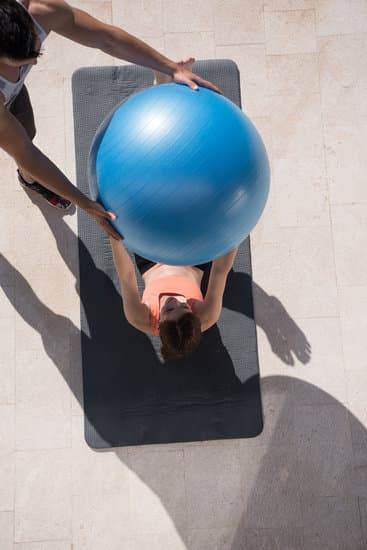Are you looking to take your fitness tracking to the next level? Look no further than Wear Fit 2.0, a cutting-edge wearable device that allows you to accurately record and analyze your exercise routines. With its advanced features and user-friendly interface, Wear Fit is the perfect companion for anyone committed to achieving their fitness goals.
Wear Fit offers a seamless way to track your workouts, monitor your progress, and stay motivated on your fitness journey. By utilizing this innovative technology, you can gain valuable insights into your exercise habits and make informed decisions about how to optimize your workouts for improved results. From tracking steps taken to monitoring heart rate during activities, Wear Fit provides comprehensive data to help you achieve peak performance.
In this article, we will explore the benefits of recording exercise with Wear Fit, how to set it up for exercise tracking, choosing the right exercise mode, tips for accurate recording, analyzing exercise data, integrating with other fitness apps, and troubleshooting common issues that may arise.
By the end of this guide, you will be well-equipped to maximize your workout potential with Wear Fit and join the ranks of successful users who have transformed their fitness levels through this revolutionary device.
Benefits of Recording Exercise With Wear Fit
Wear Fit 2.0 provides a wide range of benefits for those looking to track their exercise routines and progress. By recording your exercise with Wear Fit, you gain insight into your fitness journey, set achievable goals, and stay motivated to reach new milestones. This smart wearable not only monitors your physical activity but also helps you analyze your data to make informed decisions about your workout routine.
Tracking Progress and Setting Goals
One of the main advantages of using Wear Fit to record exercise is the ability to track your progress over time. By monitoring your daily steps, distance traveled, calories burned, and heart rate during workouts, you can see improvements in your fitness levels and overall health. Additionally, setting specific goals within the app can help keep you motivated and focused on achieving measurable outcomes.
Monitoring Health Metrics
Another key benefit of recording exercise with Wear Fit is the opportunity to monitor essential health metrics such as heart rate variability (HRV), sleep quality, and stress levels. By keeping track of these indicators through the wearable device, you can gain a better understanding of how different types of exercise impact your body and adjust your workout regimen accordingly. Furthermore, having access to this data can empower you to make proactive choices about your health and well-being.
Setting Up Wear Fit for Exercise Tracking
When it comes to tracking your exercise and fitness progress, Wear Fit 2.0 is a powerful tool that can help you stay on top of your goals. Setting up Wear Fit for exercise tracking is a simple process that can make a big difference in how you monitor and improve your workouts.
To start, make sure you have the Wear Fit app downloaded and installed on your compatible device. Once the app is set up, open it and navigate to the exercise tracking section. From there, you can input essential information such as your height, weight, age, and fitness goals. This data will help Wear Fit provide you with accurate measurements and insights as you record your exercises.
In addition to personal information, be sure to sync your wearable device with the app for real-time tracking of your activities. Whether you’re using a smartwatch or a fitness tracker, connecting it to Wear Fit will ensure that all of your exercise data is recorded seamlessly. By following these steps, you can set up Wear Fit for exercise tracking effectively and begin maximizing the benefits of this innovative tool.
| Benefits of Recording Exercise With Wear Fit | Setting Up Wear Fit for Exercise Tracking |
|---|---|
| Accurate measurement of progress | Input personal information in the app |
| Monitoring fitness goals efficiently | Sync wearable device with the app |
| Real-time tracking of activities | Begin recording exercises seamlessly |
Choosing the Right Exercise Mode on Wear Fit
Wear Fit 2.0 offers a range of exercise modes to choose from, ensuring that you can accurately record your workout sessions based on the activity you are engaging in. When it comes to selecting the right exercise mode on Wear Fit, it is important to consider the type of workout you will be doing. Whether it’s running, cycling, yoga, or weightlifting, Wear Fit has specific modes tailored to each activity to ensure precise tracking of your fitness progress.
By choosing the appropriate exercise mode on Wear Fit, you can take advantage of features such as heart rate monitoring, calorie tracking, and distance covered during your workout. For example, if you are going for a run, selecting the running mode will enable Wear Fit to track your pace, distance traveled, and calories burned more accurately.
This information not only helps you keep track of your fitness goals but also provides valuable insights into your workout intensity and performance over time.
Moreover, by selecting the right exercise mode on Wear Fit consistently for each workout session, you can build a comprehensive record of your physical activities. This data can help you monitor changes in your fitness level, set new goals based on your progress, and make adjustments to your workout routine as needed. Overall, choosing the correct exercise mode on Wear Fit plays a crucial role in maximizing the effectiveness of your workouts and achieving optimal results in your fitness journey.
| Exercise Mode | Main Features |
|---|---|
| Running | Track pace, distance, calories burned |
| Cycling | Monitor speed, route taken, elevation changes |
| Yoga | Focus on mindfulness with breathing exercises and relaxation prompts |
Tips for Accurate Exercise Recording With Wear Fit
Wear Fit 2.0 is a powerful fitness tool that can help you track and monitor your exercise routines, allowing you to stay on top of your fitness goals. To make sure you are getting the most out of Wear Fit when recording your exercises, here are some tips for accurate exercise tracking:
- Make sure your Wear Fit device is properly calibrated and synced with your smartphone or other connected devices. This will ensure that the data recorded during your workout is accurate and reliable.
- When starting a new workout session, take a moment to double-check that the exercise mode selected on Wear Fit matches the activity you are about to engage in. This can help ensure that the data recorded is tailored to the specific type of exercise you are doing.
- Stay consistent with wearing your Wear Fit device during all types of physical activities, including strength training, cardio workouts, and even daily walks. The more data collected, the better insights you can gain into your overall fitness progress over time.
Properly utilizing Wear Fit for exercise tracking not only helps you stay motivated but also allows you to make informed decisions about your fitness routine moving forward. By following these tips and guidelines, you can make the most out of this innovative fitness tool and achieve your fitness goals with accuracy and precision.
Whether it’s monitoring your heart rate during a challenging HIIT session or tracking the distance covered on a long run, Wear Fit 2.0 has got you covered for all your exercise recording needs.
Analyzing Exercise Data on Wear Fit
Wear Fit 2.0 provides users with a comprehensive platform to track their exercise routines and monitor their fitness progress. Once you have recorded your workouts using Wear Fit, you can easily analyze the data to gain valuable insights into your fitness levels and performance. Here are some tips on how to effectively analyze your exercise data on Wear Fit:
- Utilize the dashboard: The dashboard on Wear Fit allows you to view a snapshot of your recent workouts, calories burned, steps taken, and other key metrics. Take advantage of this feature to quickly assess your overall fitness activity at a glance.
- Dive deeper into statistics: Beyond the dashboard, Wear Fit offers detailed statistics for each individual workout session. You can review information such as duration, distance covered, heart rate zones, and more. By examining these details, you can identify patterns in your exercise behavior and make informed decisions about your training regimen.
- Set goals and track progress: Use the goal-setting feature on Wear Fit to establish specific targets for your workouts, whether it’s increasing daily step count or improving running pace. By regularly analyzing your progress towards these goals through the app, you can stay motivated and focused on achieving better fitness outcomes.
With Wear Fit’s data analysis tools, users can take their exercise tracking to the next level by gaining deeper insights into their performance and making informed adjustments to their fitness routines. By leveraging these features effectively, users can optimize their workouts for maximum results and continuous improvement over time. So start exploring the wealth of information available through Wear Fit 2.0 and unlock new ways to enhance your fitness journey today.
Integrating Wear Fit With Other Fitness Apps
In today’s digital age, integrating Wear Fit with other fitness apps can enhance your overall fitness tracking experience. By syncing your wearable device with popular health and fitness applications, you can take advantage of additional features and insights to further optimize your workout routine.
Whether you’re a seasoned athlete or just starting out on your fitness journey, leveraging the capabilities of Wear Fit in conjunction with other apps can provide you with a more holistic view of your health and wellness progress.
Syncing Wear Fit With Health Platforms
One of the key benefits of integrating Wear Fit with other fitness apps is the ability to consolidate all your health data in one central location. By syncing your device with platforms like Apple Health or Google Fit, you can have a comprehensive overview of your activity levels, sleep patterns, heart rate data, and more.
This seamless integration allows for a more thorough analysis of your overall health metrics and can help you identify areas for improvement in your fitness goals.
Connecting Wear Fit to Workout Apps
If you have a specific exercise routine or prefer using workout applications to guide your fitness sessions, integrating Wear Fit can provide valuable real-time data to enhance your training. By connecting Wear Fit to apps like Strava or MyFitnessPal, you can track detailed workout summaries, calories burned, distance covered, and even receive personalized training recommendations based on your performance metrics. This synergy between wearable technology and specialized workout platforms can maximize the efficiency and effectiveness of your exercise regimen.
Troubleshooting Common Issues With Recording Exercise on Wear Fit
While Wear Fit 2.0 is a powerful tool for tracking your exercise and fitness progress, you may encounter some common issues along the way. One of the most frequent problems users face is inaccurate data recording. This can be caused by various factors, such as improper device placement, incorrect settings, or technical glitches. To ensure accurate exercise recording, it is essential to double-check your settings and make sure your device is securely fastened during workouts.
Another common issue users encounter when recording exercise on Wear Fit is synchronization errors. Sometimes, your device may fail to sync with the app properly, resulting in missing or incomplete exercise data. If you experience this problem, try restarting both your device and the app, and make sure you have a stable internet connection. Additionally, checking for software updates regularly can help prevent synchronization issues and ensure smooth data transfer between your device and the app.
Battery drainage is another common concern for Wear Fit users when recording their exercises. Continuous use of GPS tracking and heart rate monitoring features can drain your device’s battery quickly, especially during long workout sessions. To mitigate this issue, consider disabling unnecessary features or reducing screen brightness while exercising. Investing in a power bank or portable charger can also be helpful in ensuring that your device stays powered throughout your workout session.
Conclusion
Wear Fit 2.0 provides users with a convenient and effective way to track their exercise routines and progress towards fitness goals. By utilizing this innovative wearable device, individuals can easily record their workouts, monitor their performance, and analyze their data to make informed decisions about their fitness journey.
One of the key benefits of recording exercise with Wear Fit is the ability to accurately track various metrics such as heart rate, calories burned, steps taken, and more. This data can provide valuable insights into the effectiveness of different exercises and help users make adjustments to their routine for optimal results. Additionally, by keeping a record of their workouts, users can stay motivated and accountable to their fitness goals.
Setting up Wear Fit for exercise tracking is a simple and straightforward process. Users can customize their settings to suit their preferences and goals, such as selecting the specific exercise modes they plan to engage in. By choosing the right exercise mode on Wear Fit, users can ensure that they are accurately tracking each workout session and maximizing the benefits of using this advanced fitness tool.
Bonus
Wear Fit 2.0 is more than just a fitness tracker – it is a powerful tool that can help you reach your exercise goals and improve your overall health. By recording your exercise with Wear Fit, you can track your progress, stay motivated, and make sure you are getting the most out of your workouts.
Many users have experienced incredible results by using Wear Fit to record their exercise routines. From weight loss to increased muscle tone, improved endurance to better sleep quality, the benefits of using Wear Fit for exercise tracking are undeniable. By staying consistent and dedicated, you too can achieve your fitness goals with the help of this innovative device.
In conclusion, if you want to take your workouts to the next level and see real results, Wear Fit 2.0 is the perfect companion for you. By accurately recording your exercise sessions, analyzing your data, and integrating Wear Fit with other fitness apps, you can maximize your workout potential and achieve a healthier lifestyle. So why wait? Start using Wear Fit today and join the countless success stories of users who have transformed their fitness with this exceptional tool.
Frequently Asked Questions
How Do You Set Up a Fitness Tracker?
Setting up a fitness tracker typically involves first charging the device, downloading the corresponding app on your smartphone, and creating an account. Follow the app’s instructions to pair your tracker with your phone and set personal preferences like goals and notifications.
How Do I Connect My Fitness Tracker to My Phone?
To connect your fitness tracker to your phone, ensure that Bluetooth is enabled on both devices. Open the app associated with your tracker, go to the settings or device tab, and select “Add a Device” or similar option. Follow the prompts to pair the devices successfully.
How Do I Set the Date and Time on My Fitness Tracker?
Setting the date and time on your fitness tracker usually involves navigating through the device’s menu settings. Typically, you can adjust these settings directly on the tracker itself by finding options for time/date settings. Make sure to set them accurately to ensure accurate tracking of your activities.

Passionate about providing useful information to anyone with an interest in the field of Personal Training, I strive to pass on to our readers quality information and to answer any questions about Personal Trainers, the work they do and how to become one.





